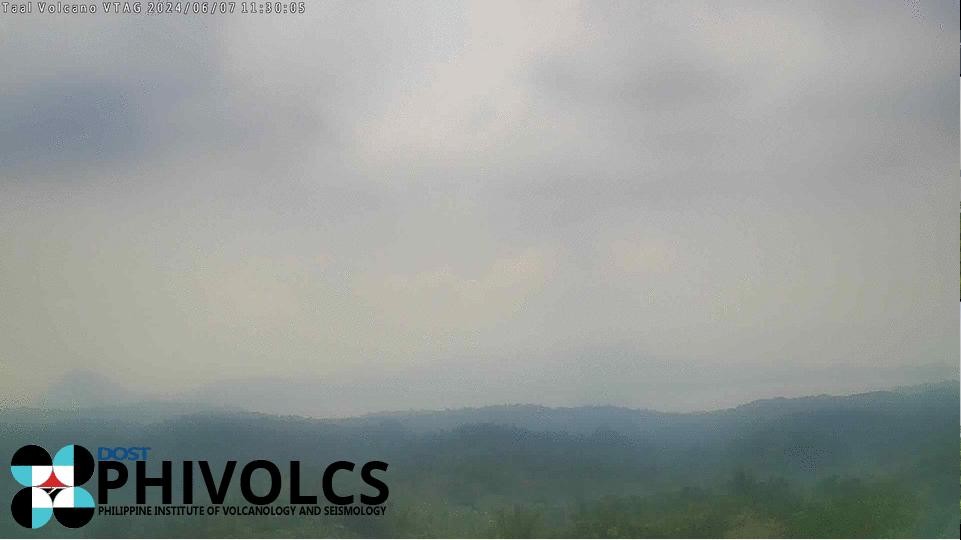
The Philippine Institute of Volcanology and Seismology (Phivolcs) says Taal Volcano again showed a degassing activity that produced “thick volcanic smog or vog” on Friday morning, June 7, 2024. (Photo courtesy of Phivolcs)
MANILA, Philippines — Taal Volcano showed degassing activity that generated “thick volcanic smog or vog” on Friday morning, the Philippine Institute of Volcanology and Seismology (Phivolcs) said.
“The public is advised to take necessary precautions against vog exposure. Alert Level 1 persists over Taal Volcano,” the state seismologist added.
In a Facebook post, Phivolcs said the degassing activity occurred at the volcano’s main crater.
READ: Phivolcs records increased sulfur dioxide degassing in Taal Volcano
According to Phivolcs, vog is a mixture of sulfur dioxide (SO2) and other volcanic gases that combine with atmospheric oxygen, moisture, dust, and sunlight, which can lead to thick volcanic smog that can harm human health.
SO2, meanwhile, is a mixture of sulfur and oxygen, which can cause eye, throat, and nose irritation, it added.
Phivolcs advised people exposed to vog to use face masks, drink plenty of water to ease the discomfort from exposure, and consult a doctor if needed.
READ: Taal Volcano logs lowest sulfur dioxide emission in 2024
On Thursday, the state seismologist warned of an increased SO2 emission from Taal Volcano.
Phivolcs said a total of 11,072 metric tons of SO2 were released from its main crater on June 6 and that this volume was higher than the average 8,294 metric tons per day of SO2 produced by Taal so far this year.
Phivolcs reported that hazy conditions were reported Thursday in Batangas City, as well as in other Batangas province towns such as Alitagtag, Tingloy, San Nicolas, Laurel, Taysan, Lobo, Lemery, Taal, Santa Teresita, Alitagtag, Cuenca, Lipa, Balete, and Malvar.


